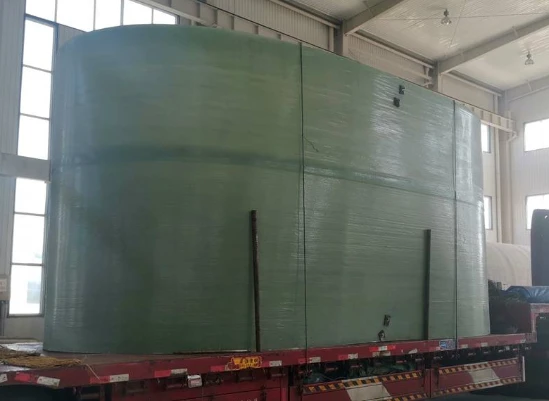
-
 Afrikaans
Afrikaans -
 Albanian
Albanian -
 Amharic
Amharic -
 Arabic
Arabic -
 Armenian
Armenian -
 Azerbaijani
Azerbaijani -
 Basque
Basque -
 Belarusian
Belarusian -
 Bengali
Bengali -
 Bosnian
Bosnian -
 Bulgarian
Bulgarian -
 Catalan
Catalan -
 Cebuano
Cebuano -
 China
China -
 China (Taiwan)
China (Taiwan) -
 Corsican
Corsican -
 Croatian
Croatian -
 Czech
Czech -
 Danish
Danish -
 Dutch
Dutch -
 English
English -
 Esperanto
Esperanto -
 Estonian
Estonian -
 Finnish
Finnish -
 French
French -
 Frisian
Frisian -
 Galician
Galician -
 Georgian
Georgian -
 German
German -
 Greek
Greek -
 Gujarati
Gujarati -
 Haitian Creole
Haitian Creole -
 hausa
hausa -
 hawaiian
hawaiian -
 Hebrew
Hebrew -
 Hindi
Hindi -
 Miao
Miao -
 Hungarian
Hungarian -
 Icelandic
Icelandic -
 igbo
igbo -
 Indonesian
Indonesian -
 irish
irish -
 Italian
Italian -
 Japanese
Japanese -
 Javanese
Javanese -
 Kannada
Kannada -
 kazakh
kazakh -
 Khmer
Khmer -
 Rwandese
Rwandese -
 Korean
Korean -
 Kurdish
Kurdish -
 Kyrgyz
Kyrgyz -
 Lao
Lao -
 Latin
Latin -
 Latvian
Latvian -
 Lithuanian
Lithuanian -
 Luxembourgish
Luxembourgish -
 Macedonian
Macedonian -
 Malgashi
Malgashi -
 Malay
Malay -
 Malayalam
Malayalam -
 Maltese
Maltese -
 Maori
Maori -
 Marathi
Marathi -
 Mongolian
Mongolian -
 Myanmar
Myanmar -
 Nepali
Nepali -
 Norwegian
Norwegian -
 Norwegian
Norwegian -
 Occitan
Occitan -
 Pashto
Pashto -
 Persian
Persian -
 Polish
Polish -
 Portuguese
Portuguese -
 Punjabi
Punjabi -
 Romanian
Romanian -
 Russian
Russian -
 Samoan
Samoan -
 Scottish Gaelic
Scottish Gaelic -
 Serbian
Serbian -
 Sesotho
Sesotho -
 Shona
Shona -
 Sindhi
Sindhi -
 Sinhala
Sinhala -
 Slovak
Slovak -
 Slovenian
Slovenian -
 Somali
Somali -
 Spanish
Spanish -
 Sundanese
Sundanese -
 Swahili
Swahili -
 Swedish
Swedish -
 Tagalog
Tagalog -
 Tajik
Tajik -
 Tamil
Tamil -
 Tatar
Tatar -
 Telugu
Telugu -
 Thai
Thai -
 Turkish
Turkish -
 Turkmen
Turkmen -
 Ukrainian
Ukrainian -
 Urdu
Urdu -
 Uighur
Uighur -
 Uzbek
Uzbek -
 Vietnamese
Vietnamese -
 Welsh
Welsh -
 Bantu
Bantu -
 Yiddish
Yiddish -
 Yoruba
Yoruba -
 Zulu
Zulu
High-Temperature Solutions Using Fiberglass Materials for Enhanced Performance and Durability
Fiberglass Products for High Temperature Applications and Benefits
Fiberglass, a material made from fine glass fibers, is renowned for its remarkable properties, making it an ideal choice for various applications, particularly in high-temperature environments. With a combination of strength, lightweight characteristics, and resistance to thermal and chemical degradation, fiberglass products have become essential in numerous industries where high temperatures are a consideration.
Understanding Fiberglass
Fiberglass is created by drawing molten glass into extremely fine strands. These strands can be woven or combined with resin to create a composite material. This combination enhances its structural integrity while retaining a low weight, making it particularly advantageous in applications where weight savings are critical.
High-Temperature Resistance
One of the standout features of fiberglass products is their ability to withstand high temperatures. Depending on the resin used, some fiberglass composites can handle temperatures exceeding 300°C (572°F). Specifically designed fiberglass products are often utilized in environments ranging from manufacturing facilities to aerospace applications, where conventional materials may fail to perform.
Applications of High-Temperature Fiberglass Products
1. Insulation Fiberglass insulation is commonly used in high-temperature applications, including boilers and furnaces. It effectively prevents heat loss and protects against extreme temperatures, enhancing energy efficiency in industrial processes.
2. Automotive Industry In the automotive sector, fiberglass is often used in engine components and heat shields. Its lightweight nature leads to improved fuel efficiency, while its ability to resist thermal stress enhances the longevity and performance of automotive parts.
3. Aerospace In aerospace applications, the aerospace industry relies on fiberglass for its weight-saving properties and heat resistance. Components such as thermal insulation blankets and protective enclosures benefit from fiberglass's ability to withstand the rigors of high-speed flight and exposure to extreme temperatures.
fiberglass products for high temperature

4. Electrical & Electronics Fiberglass is utilized in electrical insulation for high-voltage applications. Its excellent dielectric properties and thermal stability make it suitable for insulators, circuit boards, and other electronic components that operate in harsh, high-temperature environments.
5. Industrial Applications Many industries employ fiberglass for components such as ducting, piping, and tanks where high temperature and corrosive conditions are present. The ability of fiberglass to resist chemical attack and retain its structural integrity under heat ensures reliable performance in these demanding scenarios.
Benefits of Using Fiberglass in High-Temperature Applications
The use of fiberglass in high-temperature applications offers several advantages
- Durability Fiberglass products are resistant to wear and tear, ensuring long-lasting performance even in harsh conditions. - Corrosion Resistance Fiberglass does not corrode like metals, which can be a significant advantage in chemical processing industries.
- Weight Savings The lightweight nature of fiberglass makes it easier to handle and install while contributing to overall energy savings, especially in automotive and aerospace sectors.
- Thermal Insulation Its thermal insulating properties help maintain temperature control, leading to improved energy efficiency in industrial settings.
Conclusion
In conclusion, fiberglass products are indispensable in high-temperature applications across various industries. Their unique combination of thermal resistance, lightweight characteristics, and durability makes them a preferred choice for manufacturers seeking reliable and effective solutions for challenging environments. As technology advances, the continually evolving applications and formulations of fiberglass will likely lead to even broader uses in high-temperature situations, further cementing its role in modern industry.









